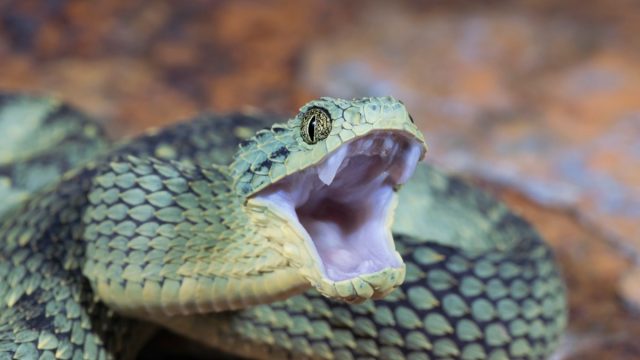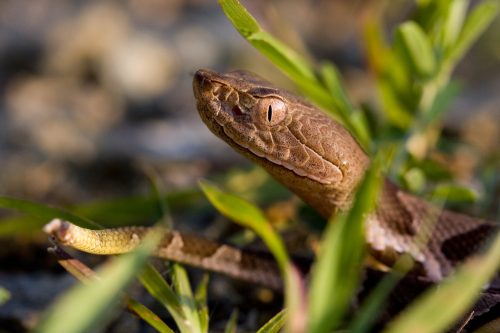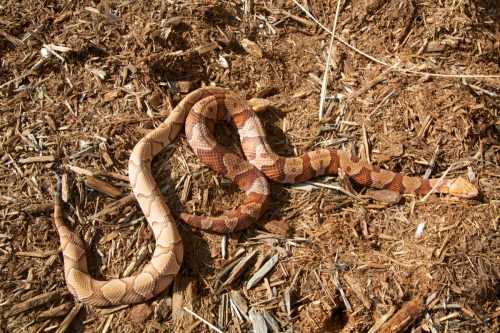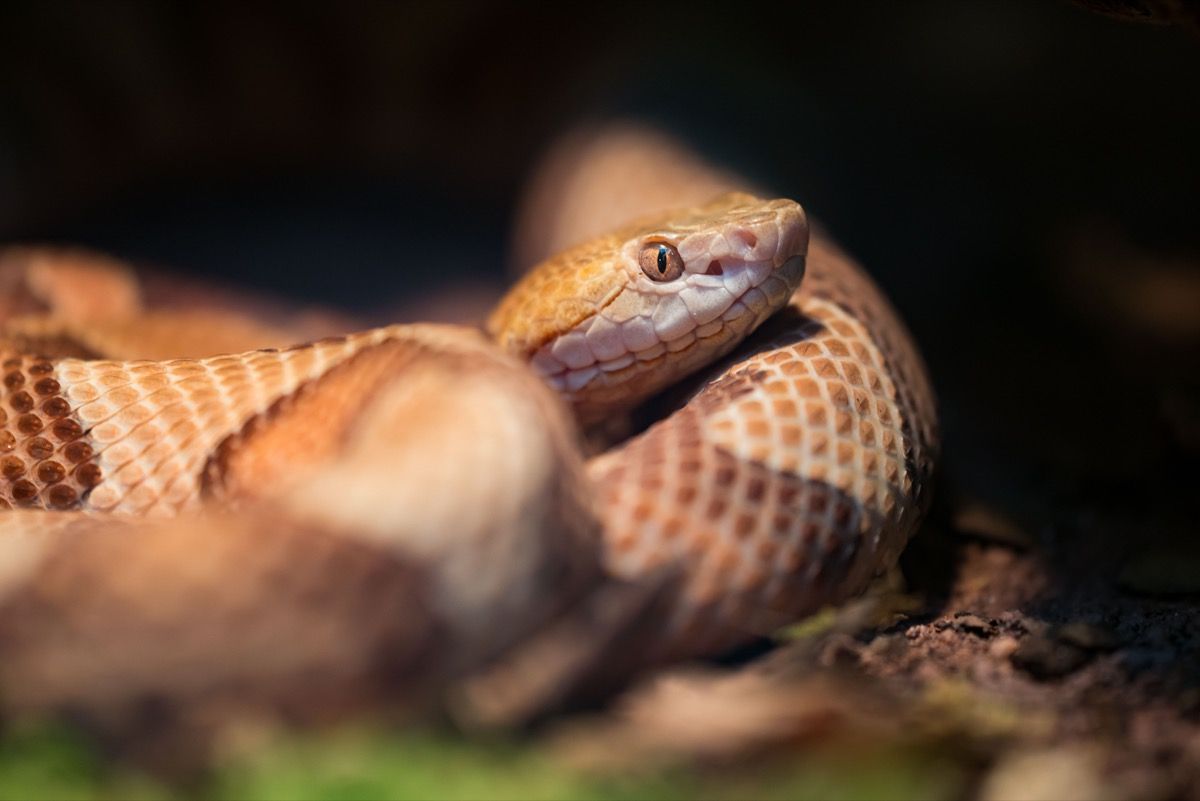You’re Now More Likely to Get Bit by Venomous Snakes—Here’s Why, New Study Says

Snakes are causing quite a stir across the country this year. In May, residents of Virginia and Georgia reported finding venomous copperheads in their homes. And in North Carolina, a 5-year-old boy and a 14-year-old boy have been bitten by this dangerous species in two separate incidents this summer. But it’s not just media attention making the problem seem more prevalent right now. Venomous snake bites are increasing, according to new research. Read on to find out why, according to a new study.
RELATED: 8 Things in Your Yard That Are Attracting Snakes to Your Home.
New research says you’re now more likely to get bit by a venomous snake.

Researchers from Emory University in Atlanta have just released findings that indicate the risk of getting bitten by a venomous snake is higher now than it once was.
Published July 11 in the GeoHealth journal, their study analyzed emergency department visits reported by the Georgia Hospital Association from 2014 to 2020. During this time, there were over 5,000 hospitalizations because of snake bites, with 3,908 of the cases being reported as venomous.
The researchers then compared temperatures on the days of the snake-related hospitalizations to other days within the same month. Through this, they found that the risk of being bitten by a venomous snake increases nearly 6 percent for every one degree Celsius the temperature rises.
In other words, warmer weather makes you more likely to get a venomous snake bite.
RELATED: Venomous Snake Spotted Swimming Across Lake: “This Is a New Fear.”
Temperatures are reaching record highs this summer.

This news is particularly concerning given the fact that much of the U.S. has been breaking heat records. From 1970 to 2022, summer temperatures in nearly 230 parts of the country have risen by an average of 2.4 degrees Fahrenheit, according to an analysis from the climate research group Climate Central.
In a July 12 press release, Noah Scovronick, PhD, the lead author for the snake study and an assistant professor of environmental health at Emory’s Rollins School of Public Health, said that the increase in the risk of a venomous snakebite with warmer weather is a “higher effect” than what is seen with other types of health outcomes linked to heat.
“As a research group, we are regularly investigating how weather and climate affect human health,” Scovronick said. “Our results show that we need to spend more effort understanding the potential health burdens from snakebite in the context of climate change. The large temperature effects we found, combined with the fact that snakebites often affect populations without access to adequate health care—particularly in other parts of the world—indicates that rising temperatures is a reason for concern.”
RELATED: 8 Plants That Will Keep Snakes Out of Your Yard, According to Pest Experts.
You should be prepared to come across a venomous snake.

As temperatures rise and human development expands, human-snake encounters are naturally going to increase, study co-author Lawrence Wilson, PhD, an adjunct professor and herpetologist at Emory’s College of Arts and Sciences, added in a statement.
“Almost anyone who spends a lot of time outdoors will have encountered a copperhead or other venomous snake,” Wilson warned.
According to Wilson, education can help reduce snakebite risk even amid increased interactions. Per the Centers for Disease Control and Prevention (CDC), around 7,000 to 8,000 people are bitten by venomous snakes in the U.S. every year. Out of those cases, only about five people die annually thanks to treatments.
“The number of deaths would be much higher if people did not seek medical care,” the agency cautions.
RELATED: For more up-to-date information, sign up for our daily newsletter.
And know what to do if you do get bit.

It’s important to be aware of the potential signs and symptoms of a snakebite. These include “puncture marks at the wound, redness, swelling bruising, bleeding, or blistering around the bite, severe pain and tenderness at the site of the bite, nausea, vomiting or diarrhea, labored breathing, rapid heart rate, weak pulse, low blood pressure, disturbed vision, metallic, mint, or rubber taste in the mouth, increased salivation and sweating, numbness or tingling around face and/or limbs, and muscle twitching,” the CDC says.
“Seek medical attention as soon as possible,” the agency advises. “Antivenom is the treatment for serious snake envenomation. The sooner antivenom can be started, the sooner irreversible damage from venom can be stopped.”